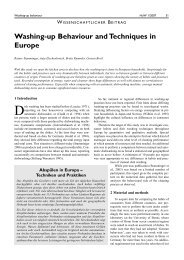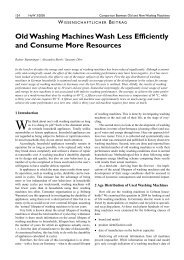Development of a novel mechatronic system for mechanical weed ...
Development of a novel mechatronic system for mechanical weed ...
Development of a novel mechatronic system for mechanical weed ...
Create successful ePaper yourself
Turn your PDF publications into a flip-book with our unique Google optimized e-Paper software.
Introduction<br />
cause dust contamination on the plants. For harder soils, a rotary strip cultivator<br />
is an option. It works on the concept <strong>of</strong> rotating cutting blades which can<br />
cultivate very hard soils. Working depth can be 2-3 cm or more if the <strong>weed</strong>s are<br />
very thick or large, but depths over 4 cm can cause damage on the plant’s root<br />
<strong>system</strong>. Disadvantages are that the working width is very hard to change and<br />
the soil must not be too wet.<br />
One other powered cultivator option is a <strong>weed</strong>-fix. Unlike most powered<br />
cultivators that rotate on an axis parallel to the ground, a <strong>weed</strong>-fix’s rotating axis<br />
is perpendicular to the ground surface. A set <strong>of</strong> two or three rotating tines works<br />
the ground and uproots the <strong>weed</strong>s. It works especially well with hard soils<br />
because <strong>of</strong> the powerful fixed tines and allows a tractor speed <strong>of</strong> up to 8 km/h.<br />
There are other alternatives such as pneumatic <strong>system</strong>s but they are not used<br />
on a large scale because <strong>of</strong> very high operating costs.<br />
One <strong>of</strong> the main problems with inter-row <strong>weed</strong>ing <strong>system</strong>s is steering. Weeding<br />
increases and decreases in effectiveness with every centimetre closer to, or<br />
further from the row. Because most <strong>weed</strong>ing <strong>system</strong>s are rigidly mounted to a<br />
crossbar on the front <strong>of</strong> a tractor, driver skill is crucial. Even the slightest<br />
deviation in direction can cause a movement <strong>of</strong> 3-4 cm in the toolbar position,<br />
which added to the usual buffer space from the plant can result in a 6-8 cm<br />
width that is not <strong>weed</strong>ed. Mounted on the front <strong>of</strong> the tractor, the toolbar can be<br />
easily seen by the driver, but is very sensitive to steering. If the toolbar is<br />
mounted directly below or behind the driver it is much less sensitive to small,<br />
immediate changes in steering but does not allow the driver to see the hoeing<br />
machinery, increasing error to sometimes 8 cm per side <strong>of</strong> the crop row. The<br />
displacement <strong>of</strong> the hoeing machinery’s centre <strong>of</strong> rotation can help to reduce<br />
this error, as can having the centre <strong>of</strong> rotation <strong>of</strong> each individual hoe directly<br />
behind the blade. This approach has been successfully applied on the Mutsaers<br />
QI steering <strong>system</strong> (see Figure 1.3).<br />
17





